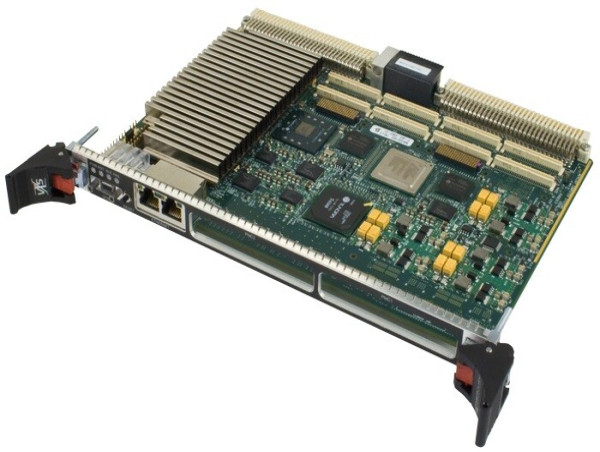Market Snapshot
The Digital Radio Frequency (RF) Market refers to the sector within the electronics and telecommunications industry that deals with the development, manufacturing, and deployment of digital technologies for wireless communication, signal processing, and data transmission using radio frequency signals.
The Global Digital Radio Frequency market was valued at USD 32.7 Billion in 2023 and is expected to reach USD 72.32 Billion by 2028, growing at a CAGR of 14.14 % during 2023-2028.
Click To get Latest version of SAMPLE Study (Including Full TOC, Table & Figures) @ https://www.htfmarketintelligence.com/sample-report/global-digital-radio-frequency-market
Market Scope / Segment Breakdown
Global Digital Radio Frequency market has been analyzed on various dimensions that includes market sizing and share analysis in dollar term as well as by volume* and price. The segments included in the market study are mentioned below which has been reviewed both qualitatively and quantitatively.
Based on the type, the market is bifurcated as Electronic Warfare Training, Electronic Warfare, Radar Test and Evaluation, Radio and Cellular Network Jamming, and On the basis of application, the market is divided as Civil, Commercial, Defense. The Commercial segment accounted for highest market share in 2022 and is hence expected to be the next fastest growing segment throughout the forecast period.
The report covers information regarding competitive outlook including the market share and company profiles of the key participants operating in the global Digital Radio Frequency market. Some of the players that are profiled in the study are Airbus (Netherlands), Raytheon Company (United States), BAE Systems (United Kingdom), Rohde & Schwarz (Germany), Elbit Systems (Israel), Thales Group (France), Curtiss Wright (United States), Israel Aerospace Industries (Israel), Northrop Grumman (United States), Leonardo (Italy). etc.
By Geography: North America, Europe, Southeast Asia, China, Japan, India, Middle East, Africa, LATAM, Others
Book Latest Edition of Global Digital Radio Frequency Market Study @ https://www.htfmarketintelligence.com/buy-now?format=3&report=1476
Qualitative Insights from Study
Digital Radio Frequency Market Trends
• 5G Revolution: The rollout of 5G networks worldwide is driving the adoption of digital RF technologies to enable faster data speeds, low latency, and increased network capacity.
• Software-Defined Radio (SDR): SDR technology, which allows for flexible reconfiguration of radio functionalities through software updates, is gaining prominence, enabling easier adaptation to changing communication standards.
• Internet of Things (IoT): The proliferation of IoT devices and applications is fueling the demand for digital RF solutions that can handle the diverse communication requirements of connected devices.
Digital Radio Frequency Market Drivers
• Data Traffic Surge: The exponential growth in data consumption, driven by video streaming, social media, and cloud services, is pushing for advanced digital RF technologies to ensure efficient data transmission and network optimization.
• Connected Devices: The increasing number of connected devices, including smartphones, wearables, smart appliances, and IoT sensors, is creating a demand for robust and versatile digital RF solutions.
Digital Radio Frequency Market Opportunity
• 5G Infrastructure: The ongoing global rollout of 5G networks presents significant opportunities for digital RF technology providers to supply equipment for base stations, small cells, and other network components.
• IoT Expansion: The expanding IoT ecosystem offers opportunities for digital RF solutions to cater to the unique communication requirements of various IoT devices and applications.
Do you Have Any Query? Ask Our Expert @: https://www.htfmarketintelligence.com/enquiry-before-buy/global-digital-radio-frequency-market
Research Objective
• To define and describe the Digital Radio Frequency segmented by product & service, by application, by end-user, and by region.
• To estimate and forecast the Digital Radio Frequency by value in USD Billion.
• To estimate and forecast the market size for various segments with regard to Region Name.
• To profile key players and comprehensively analyze their market position in terms of ranking and core competencies.
• To analyze the markets situation with regard to industry trends, prospects, and contribution to the total market by identifying the high-growth segments of the Digital Radio Frequency and provide the competitive landscape.
• To provide industry attractiveness with help of various tools such as the Porter’s five force analysis and the PESTEL analysis.
Market Size Estimation
Top-down and bottom-up approaches are used to validate the Global Digital Radio Frequency Market size market and estimate the market size for Manufacturers, Type and Regions.
The market estimations in this report are based on the marketed sale price of Digital Radio Frequency excluding any discounts provided by the manufacturer, distributor, wholesaler or traders. The percentage splits, market shares, and breakdowns of the product segments are derived based on weightages assigned to each of the segments based on their utilization rate and average sale price. The regional splits of the overall Digital Radio Frequency market and its sub segments are based on the percentage adoption or utilization of the given product in the respective region or country.
Get Detailed TOC and Overview of Report @ https://www.htfmarketintelligence.com/report/global-digital-radio-frequency-market
FIVE FORCES & PESTLE ANALYSIS:
In order to better understand Digital Radio Frequency market conditions five forces analysis is conducted that includes the Bargaining power of buyers, Bargaining power of suppliers, Threat of new entrants, Threat of substitutes, and Threat of rivalry.
• Political (Political policy and stability as well as trade, fiscal, and taxation policies)
• Economical (Interest rates, employment or unemployment rates, raw material costs, and foreign exchange rates)
• Social (Changing family demographics, education levels, cultural trends, attitude changes, and changes in lifestyles)
• Technological (Changes in digital or mobile technology, automation, research, and development)
• Legal (Employment legislation, consumer law, health, and safety, international as well as trade regulation and restrictions)
• Environmental (Climate, recycling procedures, carbon footprint, waste disposal, and sustainability)
Thanks for reading this article; HTF MI also offers Custom Research services providing focused, comprehensive, and tailored research according to clientele objectives. Thanks for reading this article; you can also get individual chapter-wise sections or region-wise reports like Balkan, China-based, Japanese, German, North American, Europe, or Southeast Asia.
Criag Francis
HTF Market Intelligence Consulting Pvt Ltd
+1 434-322-0091
[email protected]
Visit us on social media:
Facebook
Twitter
LinkedIn



